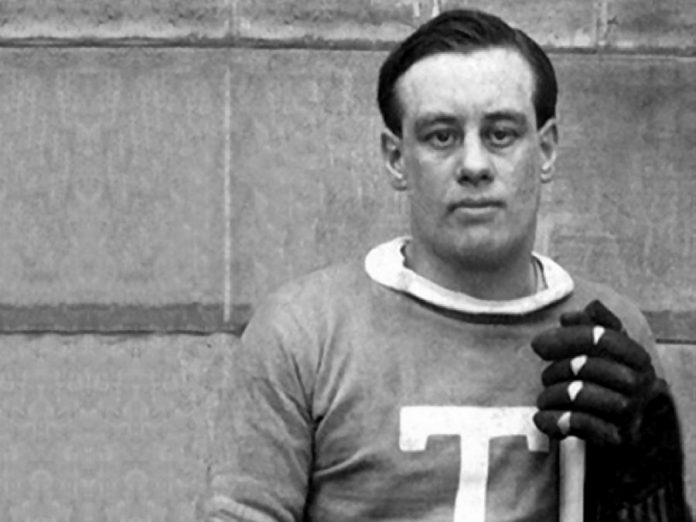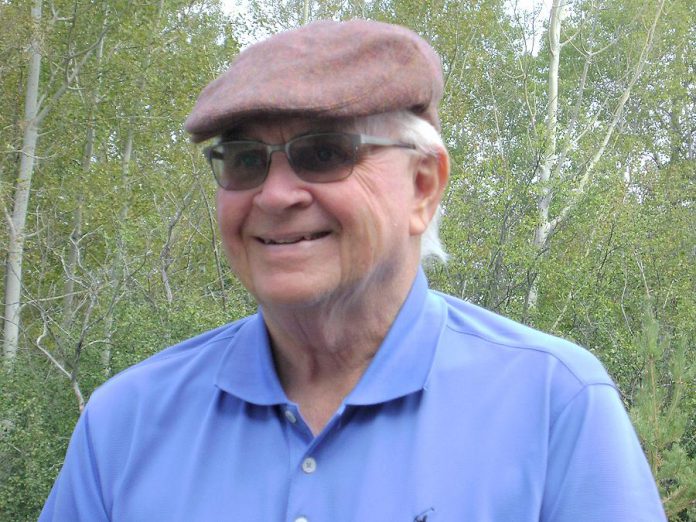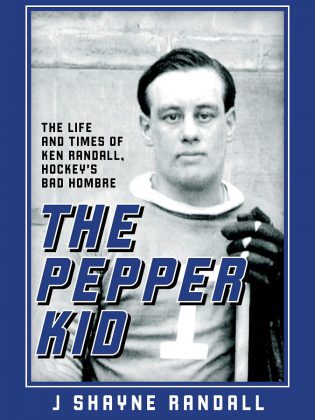
Difficult as it remains to believe for fans of the Toronto Maple Leafs born in the 1960s and since, the franchise achieved frequent championship success over the 50 years prior.
Suspended high above the Air Canada Centre ice surface, neatly aligned banners speak to the club’s 13 Stanley Cup victories while similar tributes pay homage to the Hockey Hall of Fame-inducted players who are forever linked with the team’s glory years.
As a lifelong Maple Leafs supporter, Shayne Randall is well aware of the likes of Syl Apps, King Clancy, Johnny Bower and Dave Keon and their respective contributions to the Maple Leafs’ historic past. That said, the Peterborough resident is sharing the unheralded story of “an amazing pioneer” who captained the Toronto Arenas to a Stanley Cup title in 1918 — the first for the Maple Leafs franchise.
“Off the ice, he was a gentleman and a scholar … great to his kids,” says Shayne of his grandfather Ken Randall.
“But there was a Jekyll and Hyde personality. He was mean (on the ice). It’s rumoured he had one regular hockey stick and he had another that he sharpened the end of so sharp that he could shave with. It was a brutal time for hockey.”
The Pepper Kid: The Life and Times of Ken Randall, Hockey’s Bad Hombre relates the story of the life and times of the Kingston-born forward and defenceman who played professionally for two decades, 10 of those years in the National Hockey League (NHL) with four teams — the Toronto Arenas, the Toronto St. Patricks, the Hamilton Tigers, and the New York Americans.

The 428-page book, heavily illustrated with historic photos, resulted from Randall’s mission to have his grandfather nominated for induction into the Hockey Hall of Fame.
“I have a cousin who was sort of the historian as far as Ken Randall is concerned,” relates Shayne, who at age 76 is the oldest of Ken Randall’s 14 grandchildren.
“We would talk and felt he had such a good career when you look at some of the others that are in the Hall of Fame. I got more interested in it and about 10 years ago, I thought I’m going to try and see if I can get him in (the Hall of Fame), so I got his statistics and found out more about him.”
“My kids got on me about five years ago. They were all bugging me, ‘When are you going to write this book?’ I got really serious about it three years ago and started digging. I got information from the family: stories about him and some of the incidents he had been involved in over the years, people he had met, and so on.”
The end result, says Randall, is “a historical primer for professional hockey” which features his grandfather at its centre; a tale of how the game evolved from the use of a wooden octagon-shaped puck to professional hockey’s development and subsequent popularity south of the border.
“He was first tagged with that name (The Pepper Kid) during his Maritime days,” Shayne says.
“He had hooked on with one of the Toronto teams and played a couple of games. He wasn’t getting much ice time. The guy who owned the Toronto team was a rascal, Eddie Livingstone. He pushed his partners in the NHA (National Hockey Association) so badly that they started the NHL just to get rid of him.

“Livingstone made a deal with the Cape Breton team that had got into the Maritime Hockey League in 1912. He sent two players down there (Randall being one). He was such a star they nicknamed him The Pepper Kid because that’s when he really started to develop his reputation as a tough man and a bad guy and all the rest.”
“When he got back to Toronto in 1915 or 1916, he hooked up with another great defenceman, Harry Cameron, and they were the keys to two Stanley Cup victories. Cameron was a Bobby Orr-type of defenceman, a free-wheeling rushing defenceman, and Randall was a stay-at-home defenceman. They said they went together like salt and pepper. The salt was Harry Cameron because he could score and the pepper was Ken Randall because he was a tough guy.”
In 1925, Hamilton Tigers players — Randall included — went on strike, demanding more money right before the Stanley Cup playoffs.
“It was a long and bitter struggle,” Shayne relates. “The league suspended them and they didn’t even get to play for the Stanley Cup.
“The NHL expanded the following year and sold an expansion franchise to a guy in New York. They bought all the players contracts and he went from making about $900 a year Canadian to a three-year deal for $5,000 US a year. He went from playing at the Mutual Arena in Toronto in front of 5,000 to the first game in Madison Square Garden that drew 17,900 fans.
“He was a radical. He was one of the early pioneers for hockey players’ rights.”
Shayne hasn’t completely given up his effort to have his grandfather inducted into the Hockey Hall of Fame, but rates his chance of any success as “less than five per cent.”
With an NHL career total of 121 points (including playoffs) in 224 games, to go along with 533 penalty minutes, Ken Randall’s statistics aren’t the stuff of legend. Still, his grandson maintains the breadth of his experience during the professional game’s early years — “He refereed, he coached, he played” — is enough to merit consideration.
Having begun his hockey journey in 1906 with the Lindsay Midgets, Randall last laced up his skates in 1930-31 with the Ottawa Patricias of the Ontario Professional Hockey League. His name is engraved on the Stanley Cup twice — with the 1917-18 Toronto Arenas and with the 1921-22 Toronto St. Patricks. He died in 1947 at age 58 after a short illness.
“He had so many blows to the head,” Shayne says. “That was really his downfall.”
With this project done, Shayne is working on another book, Bag Dragger: Memoirs of a Looper, which details his experiences as a professional caddy from the mid 1950s into the following decade. Among those he caddied for were Jack Nicklaus and Bob Hope. And he has yet another book on the backburner, titled Yesterday’s Peach Pie “about the rise and fall of a guy who goes from the outhouse to the penthouse and back to the outhouse.”
A sports journalist who wrote for The Peterborough Examiner, Shayne’s previous published writing experiences include 2013’s So You Want To Own A Subway Franchise, described as “a cautionary tale about the QSR (Quick Service Restaurant) industry.”
The Pepper Kid, however, is a benchmark for Randall, speaking to his passion for the Maple Leafs as well as his admiration for his grandfather’s paving the way for the game as we know it today.
“When the Leafs trained here (in Peterborough) in the 1960s, I was the assistant pro at the golf course and I got to meet them all and played golf with most of them,” he says.
“I was a real fan but, in the 1970s and 1980s, I lost interest because the game got rather barbaric. I’m enjoying what I see today. It’s become watchable again.”
Would his grandfather be equally impressed with today’s version of the game he was a huge part of it during its growing pains?
“He wouldn’t believe today’s NHL … they’re so big and fast and skilled.”
The Pepper Kid is available at Amazon.ca as well as in an ebook format via Kindle, Smashbooks, and Kobo. As of this writing, Shanye was negotiating with Chapters in Peterborough for its sale there.
For more information, visit the book’s website at www.thepepperkid.com.


























